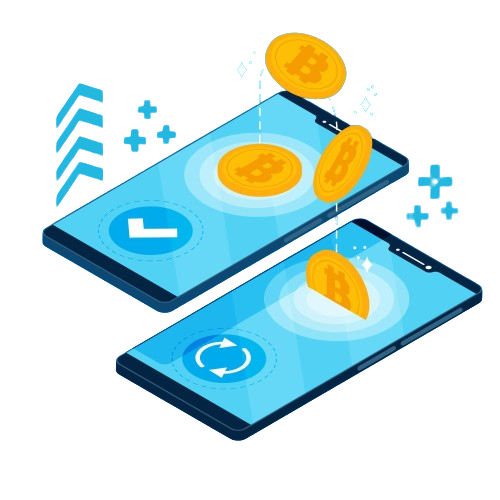
The Bitcoin Lightning Network is a second-layer protocol that operates on top of the Bitcoin blockchain to enable instant transactions between participants. Using the Lightning Network can significantly improve the Bitcoin network’s scalability by moving smaller transactions off-chain, as well as enable near-instant payments at a fraction of the fees required for on-chain Bitcoin transactions.
In this guide, we will walk through the key steps required to start using the Bitcoin Lightning Network for fast, cheap payments and transactions. We will cover setting up a Bitcoin wallet, obtaining Bitcoin, opening payment channels, sending instant micropayments, and closing channels. With the right setup, the Lightning Network can take Bitcoin payments to the next level in terms of speed, cost, and scalability.
Step 1: Set Up a Bitcoin Wallet
The first step to using Lightning is to set up a Bitcoin wallet that supports both on-chain Bitcoin transactions as well as off-chain Lightning payments. There are various wallet options, but for beginners, an open-source, non-custodial Bitcoin wallet with a clear user interface is recommended.
When setting up your Bitcoin wallet, be sure to carefully store the recovery phrase or private keys. This will allow you to recover your wallet if needed. Once the wallet is secured, you can proceed to fund it with Bitcoin.
Step 2: Obtain Bitcoin

To transact on the Lightning Network, you will need Bitcoin in your wallet. The easiest way to obtain Bitcoin is to purchase it on a cryptocurrency exchange. Major exchanges allow you to quickly buy Bitcoin with a debit/credit card or bank transfer.
Once you purchase BTC on an exchange, withdraw it to the Bitcoin address associated with your Lightning-enabled wallet. Make sure to account for any withdrawal fees charged by the exchange. Sending Bitcoin on-chain will require waiting for confirmation.
Step 3: Download a Lightning Wallet
While your base Bitcoin wallet contains your on-chain balance, you will need to download a separate Lightning wallet app to interact with the off-chain Lightning Network. There are various Lightning wallet options for mobile and desktop.
Choose a user-friendly Lightning wallet that integrates with your Bitcoin wallet. This will allow you to seamlessly open channels and make Lightning payments from the same app. Be sure to evaluate security features when selecting a Lightning wallet.
Step 4: Fund Your Lightning Wallet
Once you have a Lightning wallet installed, you will need to fund it with Bitcoin from your on-chain Bitcoin wallet. Most Lightning wallets provide an option to deposit BTC, which will move the funds into your off-chain balance.
Depositing Bitcoin from your on-chain wallet to Lightning is often called “opening a channel.” You can open multiple channels of varying sizes. More BTC allocated to Lightning means higher payment volume capacity.
Step 5: Open Channels
Opening a payment channel involves committing a certain amount of Bitcoin into the channel, which can then facilitate Lightning transactions with others. Your wallet will handle channel opening automatically based on your settings.
You can manually open channels with well-connected nodes for greater connectivity. Channels can be funded symmetrically or asymmetrically between participants. Fees may be charged for opening and closing channels.
Step 6: Send Instant Lightning Transactions

Once your Lightning wallet is funded with BTC, you can start sending instant, low-cost payments to recipients and businesses also using the Lightning Network. Payments route through the network of payment channels.
Scan a recipient’s Lightning invoice or node ID using your Lightning wallet to send Bitcoin micropayments. You can send payments fractionally in the range of satoshis rather than full Bitcoins. Lightning transactions are usually completed in seconds.
Step 7: Track Payment Routing
One benefit of Lightning is the ability to track payments in real-time as they route through the network of channels. You can visualize the path a payment takes as it hops across channels with sufficient capacity.
Lightning explorers provide tools to track payment routing on the network. This brings transparency to transactions as well as aids in diagnosing any payment bottlenecks or failures.
Step 8: Rebalance Lightning Channels
To optimize payment routing, it helps to occasionally rebalance your Lightning channels by shifting funds between them. For example, you can rebalance to allocate more funds to frequently used channels.
Most Lightning wallets make channel rebalancing easy. You can rebalance manually or set the wallet to automatically rebalance channels based on the allocation and capacity you desire.
Step 9: Refill Balance with On-Chain Bitcoin
Over time, as you pay Lightning invoices and route payments, your channel balances will decrease. When balances run low, you simply need to top up your Lightning wallet with additional on-chain Bitcoin.
Refilling your Lightning wallet from your on-chain Bitcoin wallet replenishes the funds available for your payment channels. Refilling channels enable you to continue transacting on Lightning.
Step 10: Close Channels and Withdraw Bitcoin

When you are ready to close a Lightning channel or are done using the Lightning Network, you can close channels to withdraw your remaining Bitcoin. Closing a channel settles the final channel balance on-chain.
Withdrawing Bitcoin from Lightning may incur on-chain mining fees. Withdrawals may also require waiting for confirmations before your Bitcoin is accessible. Closing channels requires planning as funds are locked up temporarily.
Conclusion
The Lightning Network unlocks transformative scaling, speed, and cost benefits for Bitcoin payments and transactions. Following the key steps outlined above will help you leverage the Lightning Network to enable instant, high-volume micropayments.
As Lightning matures and becomes more widely adopted, using it for remittances, e-commerce, gaming, and everyday P2P payments will become seamless. Lightning also paves the way for advanced Bitcoin smart contracts and decentralized finance applications.
The adoption of Lightning is still early, so there are UX improvements to be made. But with the right Bitcoin wallet setup, funding channels with BTC, and selecting well-connected nodes, Lightning enables a paradigm shift in how we use Bitcoin and blockchain technology. The future looks bright for instant, scalable Bitcoin payments.